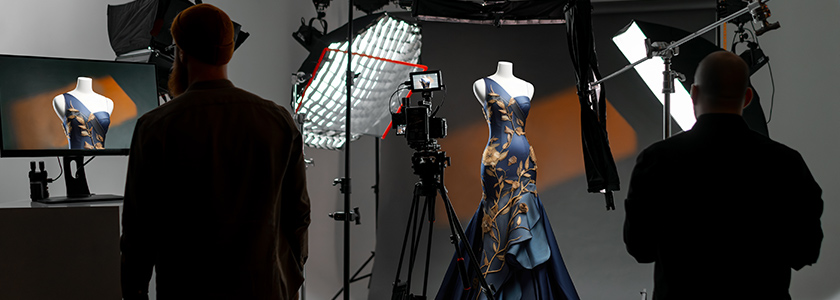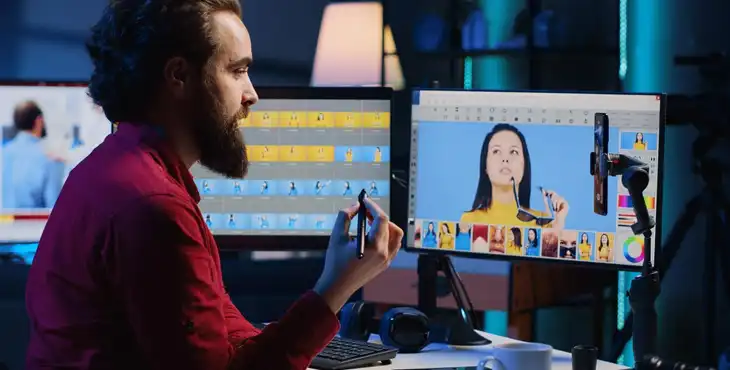Have you come across any social media meme that shows the difference between the clothes purchased online vs. how it looks when you get them in your hands for real? Though it is a funny one, the issue is real. Whether you buy a cloth, jewelry, or a simple scarf online, the quality can never be assessed instantaneously, the way you purchase from a brick-and-mortar store.
This inconsistency is an issue for both the customer and multi-channel fashion retailers that are not using ghost mannequin photography solutions. To bring about consistency in product representations and customer experience across all the channels is truly challenging. This is where quality ghost mannequin photography and editing solutions play a huge role in eliminating inconsistencies.
It is not just random small-scale multi-channel fashion retailers selling their products over Instagram or other social media platforms that are facing the problem. Even large multi-channel fashion retailers with billions of turnover every year, like Zara, H&M, and Nordstrom, face marketing consistency issues. These discrepancies hugely impact customer satisfaction and brand reputation.

How Major Brands Address These Issues
However, bigger brands are smart enough to add statements such as how Zara has under its ‘My PURCHASES’ section on their online purchase page. It says,
At Zara, we work to ensure you receive the items in your order on time and in their original condition. However, if you have a specific incident with your purchase, you can contact us so that we can review your case and help you solve it.
So, to avoid all this hotchpotch, if you are a fashion retailer or a marketer, invest in reliable ghost mannequin photography and editing solutions. If you already haven’t, this blog will detail all about it. Get ahead and read it to understand the concept in depth.
Inconsistent Product Images Could Harm your Multi-channel Marketing Plan
There are numerous ways a multi-channel marketing fashion retailer like you can market their products. E-commerce websites, mobile apps, social media platforms, pop-up shops, marketplaces, catalog mail order, television home shopping, third-party retailer platforms, and other omnichannel strategies like what Nordstrom does by integrating online and offline channels, allowing its buyers to buy online and pick up in-store, or even reserve items for trial.
Opportunities are umpteen, but they require incredible marketing strategies. Primarily, the detailing should go into capturing the images of these products in the best possible way to allure the right customers. Other than the brick-and-mortar space everywhere else, the right images matter.
Having inconsistency in images of the same product published on various online platforms will simply confuse the customers. The purchase decision by an online buyer of any fashion retail brand is always by reviewing the images uploaded. An article published online by the internal journal of electronic commerce confirms that inconsistent product images will hurt customer choice satisfaction.
A neat, clear, and uniform presentation of a product will help customers process information better. The study is also against the idea of presenting each product under each product category with differing backgrounds or colors. This is because inconsistencies in backgrounds have a bigger negative impact (reducing customer satisfaction by 6% to 19%) than inconsistencies in how the product is positioned (which reduces satisfaction by 3% to 6%). This is exactly why many E-commerce stores have kept the image background white or shades of white.
Another hurdle for multi-channel marketing is bringing consistency in post-production standards. Maintaining the same level of brightness, contrast, and saturation in all the images will solve color confusion among the customers. Every multi-channel fashion brand’s retail images should undergo strict quality checks against a standard reference image. This means the created reference image will set some standards for the rest of the image production. For example, it will have a set brightness to match any typical consumer screen or a contrast ratio, say, 700: 1 across all images or saturation adjusted at +10 to compensate for a typically muted display of colors on a standard screen, ensuring colors look vibrant yet true to life.
A fashionista will never compromise even for her color or style choices when it comes to online or offline purchases. Not just that! Gartner says 90% of marketers struggle to seamlessly connect more than three channels on the buyer journey. Inconsistency in retail product images across various platforms is one of the reasons as it indicates inconsistent brand communication.
Ghost Mannequin Photography as the Best Solution
The best solution to solve these product image inconsistencies is undoubtedly relying on ghost mannequin photography and editing solutions. A ghost mannequin can portray the right shape and fit, in the case of an apparel product, a jewelry piece, or any fashion product in the pic without having a model in the shot. If you browse through top fashion retailers’ websites or E-commerce sites, you would have come across shaped products floating freely on a clear background. It doesn’t have an unnecessary 2D or 3D effect added to it making it the best product photo solution to push the customers to make the right purchase decision.
How Is It Done?
Step 1: Careful Capturing
Photographs need to be taken of the product on a mannequin. Click from front, back, and sides, ensuring all design elements of the product are visible.
Step 2: Background Editing
Once the perfect exterior shots are captured, the next step involves editing the background to ensure the dress stands out clearly, leaving no element of distraction in the image. With the help of photo editing software, remove the mannequin and replace the background with a clean, neutral color or a subtle gradient of deep color.
This helps to make the product more attractive and focuses the viewer’s attention on the dress itself. For example, if the cocktail dress is a vibrant red, a soft, light gray or white background can make the color pop and highlight the dress’s features more effectively.
Step 3: Final Touch-ups
In the last step, final image adjustments are done to enhance the photographer’s overall quality and ensure the dress looks appealing and true to its actual appearance. This might include adjusting brightness and contrast, enhancing colors, or sharpening the image to make every detail clear or any other standard set by a brand. Image retouching gives a magic touch to the images.
For instance, if the cocktail dress has intricate lace details, these might be slightly enhanced to draw attention to the craftsmanship, ensuring the texture is visible and appealing in the final product image.
How Do Ghost Mannequin Images Enhance Online and Offline Sales Channels?
As the most reliable product image editing solution, ghost mannequin photography will help create high-quality images that catch hold of viewers’ attention quickly and push them into the purchase funnel. If stats on the internet are to be believed, the fashion E-commerce market globally is expected to significantly rise to reach £1 trillion in 2025.
This means that if you are a player in the fashion segment, you must keep in mind that the competition is getting tighter and tighter. . With the availability of more online and offline collaboration opportunities for all multi-channel fashion retailers, it will be a tough game for you. Do not worry! Ghost mannequin photography and editing can enhance your sales and marketing channels immensely.
Increased Product Focus: Ghost mannequin photography involves the removal of the mannequin entirely from the image during the editing phase. These images direct the customer’s attention solely to the product. This allows prospects to focus on the details, fabric, and fit of the item without any distractions. These images used in offline marketing printed catalogs and promotional materials can help customers visualize the product better, thus enhancing the perceived value and quality of the product.
Cost Efficiency: Investment for ghost mannequin photography and editing is a one-time affair and way more cost-effective than hiring models. A Medium article indicates that mannequin services start at $0.90/image and delivery time is just 6 hours. Meanwhile, in the US, modeling fees can range from free up to $5,000 for well-known models.
Versatility in Use: Images created by ghost mannequin photography and editing techniques are versatile and can be used across a variety of marketing materials, including product listings, printed catalogs, promotional flyers, etc.
Enhanced Detailing: Ghost mannequin photography and editing allow help in detailed visuals allowing a clean display of product features such as interior lining, cuffs, or back details that might be obscured by a traditional mannequin or model.
Types of Ghost Mannequin Photography and Editing Techniques
If you think you just need a mannequin, a good DSLR camera, and a computer installed with Photoshop for proper ghost mannequin photography and editing output, then you got it wrong. Get a professional team to do it for you.
This is because the process mentioned in this blog under the section, ‘How is it done?’ is the basic steps on how to do it. There are various ways by which one can do it. Even there are choices in selecting mannequins. Here are a few basic types.
- Full-body Ghost Mannequin: This type of mannequin is utilized to display complete outfits, such as a dress or a suit.
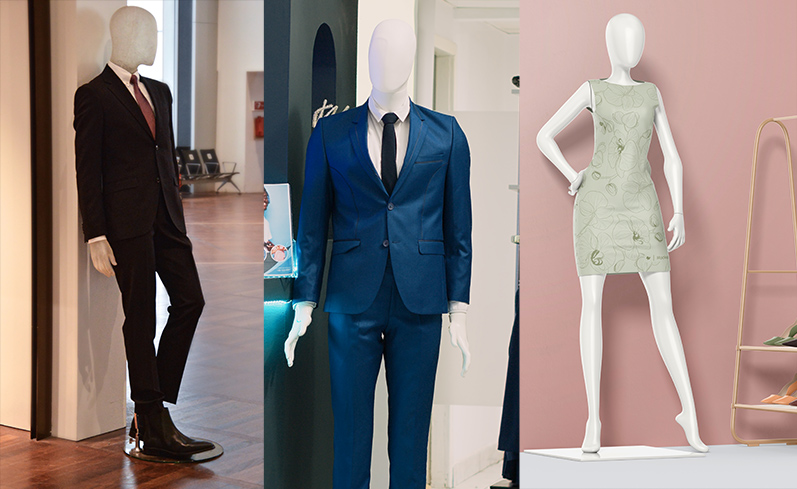
- Torso-only Ghost Mannequin: Make use of this kind of mannequin to feature tops, shirts, or jackets, utilizing only the torso part of the mannequin for easier handling and editing.
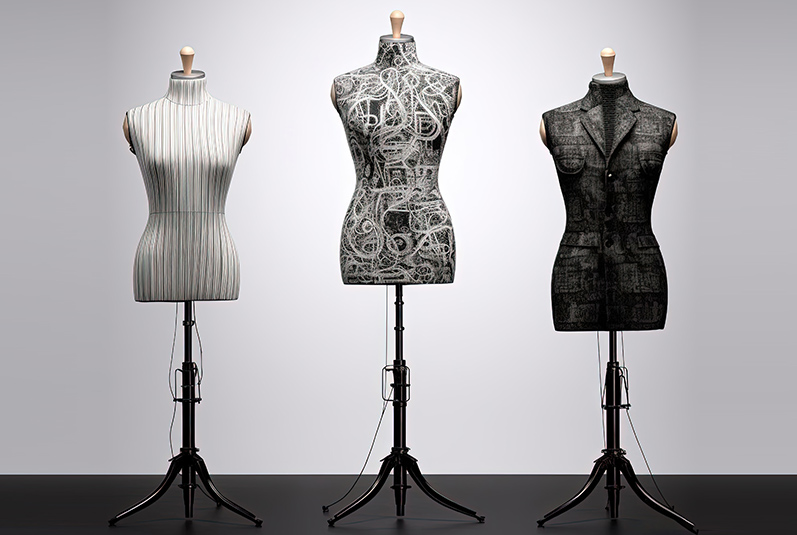
- Bottom-only Ghost Mannequin: This type of mannequin is designed to support the lower body and is used for photographing pants, skirts, or shorts using mannequin parts.
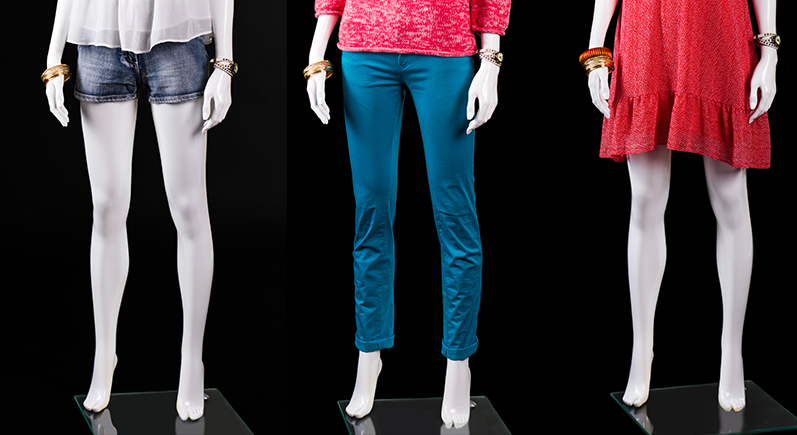
- 360-degree Ghost Mannequin: This type of mannequin helps in a rotational view of the product, offering a comprehensive perspective from all angles. This often involves more complex photography and editing processes to stitch together multiple images taken from various angles seamlessly.
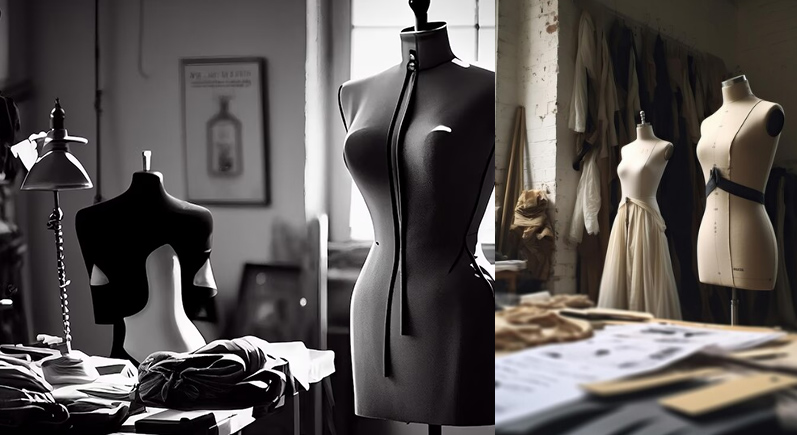
- Detail Ghost Mannequin: This approach of photography is often used by using partial mannequins or close-up shots to focus on small details or features of the clothing, such as textures, buttons, or embroidery.
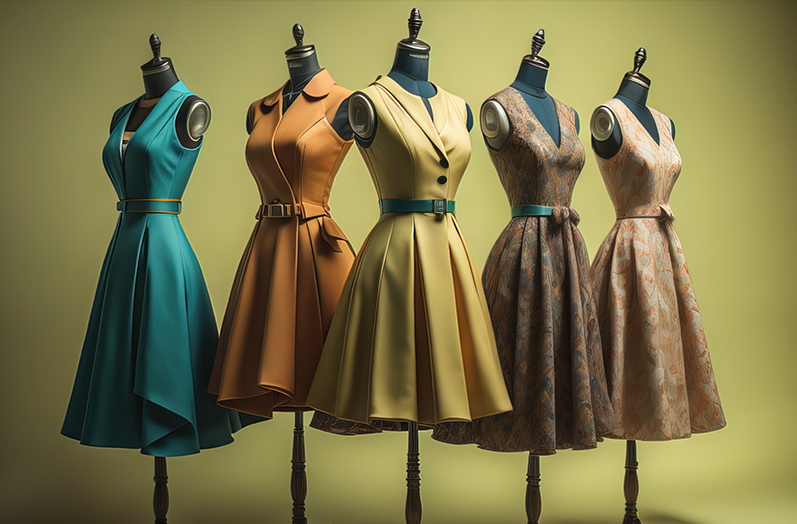
Emerging Technologies Enhancing Ghost Mannequin Photography
Today, the ghost mannequin technique, giving clothes a 3D, hollow man effect, is being transformed by AR and AI. These technologies allow consumers to visualize apparel more dynamically. For instance, AR can enable a shopper to shop for a skirt and see a ghost mannequin image of the skirt in real-time, in their avatar, making the shopping experience more personal and engaging.
The ai incorporation, on the other hand, can automate the process of creating ghost mannequin images, helping companies, especially large multi-channel fashion retailers reduce the cost associated with traditional photography. The usage of AI can help retailers like you in analyzing clothing items and automatically adjust the images based on customers’ preferences or body shapes.
Sustainability in Fashion Imaging
When it comes to the fashion industry, the new buzzword is sustainable fashion and digital imaging plays a crucial role in this area. The use of technologies like the ghost mannequin technique contributes to sustainability by reducing the need for physical samples needed for models.
If a fashion retailer is going down the traditional path of taking the help of fashion models to click each image, more clothing samples are required. Imagine for each size, a new sample needs to be produced. This won’t happen in ghost mannequin photography thus lowering the carbon footprint associated with traditional photoshoots.
Moreover, bringing digital imaging as a mandatory practice aligns with the principles of a circular economy. By doing so fashion brands can promote longer product life cycles and reduce environmental impact. Meanwhile, brands can also use these images to market products more effectively, minimizing overproduction by aligning supply more closely with demand.
End Note
As we look towards the future, the integration of emerging technologies with traditional techniques like the ghost mannequin will continue to revolutionize fashion E-commerce. This integration not only enhances the consumer experience but also supports the urgent need for sustainability in the industry. By adopting these innovations, brands can stay competitive in a rapidly changing market while also contributing to a more sustainable world.

SmartPHOTOeditors
